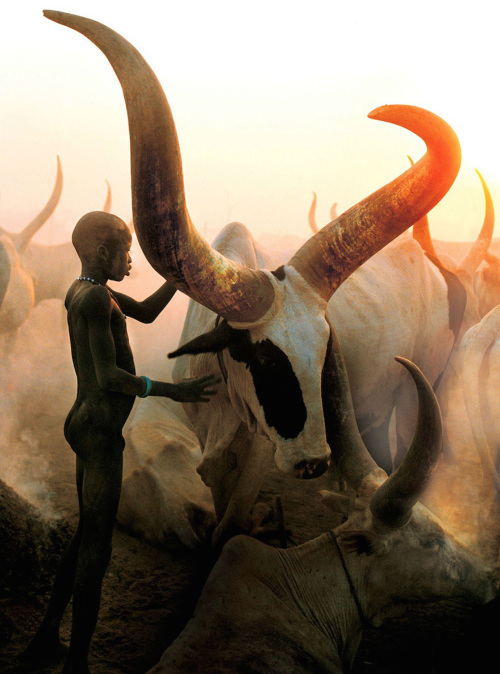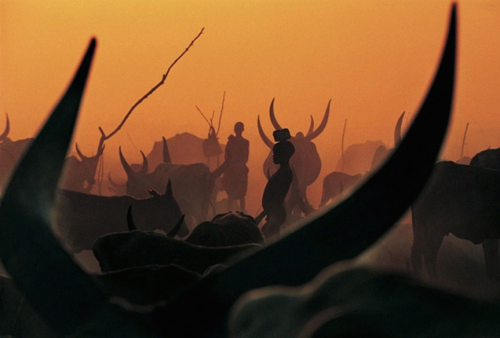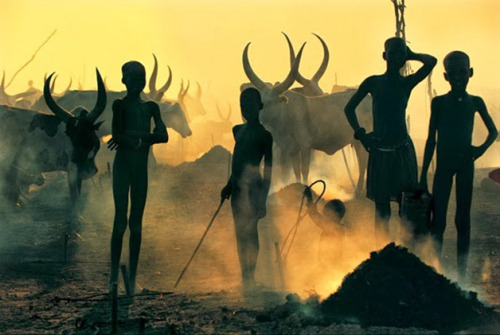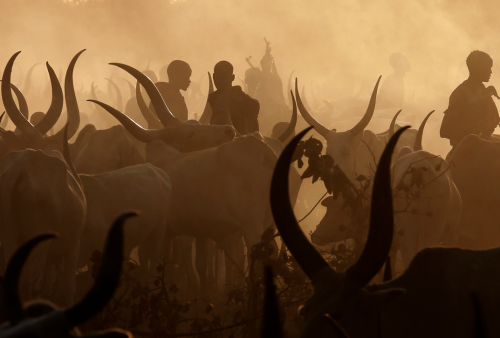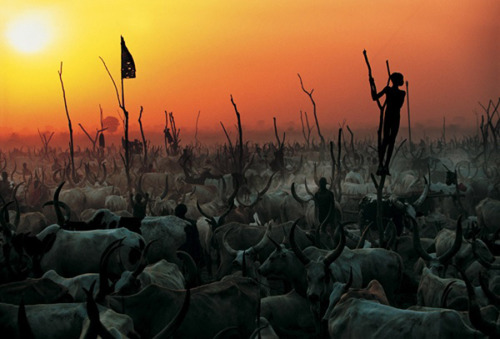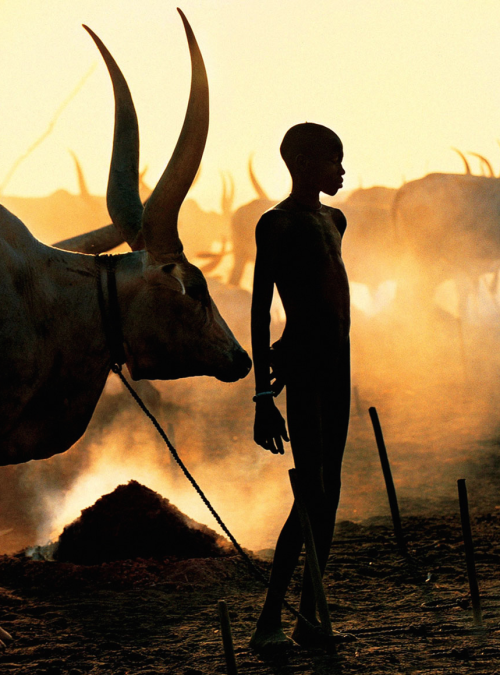nubbsgalore:boys from the majority dinka tribe of south sudan — seen here in a wut, or cattl
nubbsgalore: boys from the majority dinka tribe of south sudan — seen here in a wut, or cattle camp — accompany their namesake ox everywhere into adulthood, in the hopes that they will mature with the same strength and beauty. named after their favoured ox in a coming of age ceremony, the boys will thereafter treat the animals as part of their families. at the onset of the dry season, which typically begins in november and lasts until may, the dinka will move their herds from savannah settlements where they raise grain crops to cattle camps along the nile where they can take advantage of the grasslands. despite the presence of the river, agriculture and fishing are negligible in south sudan. cattle herding is the most important cultural and economic activity, with more than 80 percent in south sudan reliant on livestock for their livelihoods. the ox generate nourishment, fuel, clothing, draught power for crop production, and cash for things such as grain and school fees. they are stores of wealth which provide not only prestige and cultural value, but a sense of security, particularly during ever increasing times of drought. complicating matters for the dinka is internecine political violence, which prevents many from planting crops during the wet season, leading to fears of famine, and which prevents un aid workers from vaccinating their ox, who have a calf mortality rate of 50 percent. south sudan gained independence from the north in 2011, and pro south dinka farmers have been in conflict with the cattle herding misseriya arab tribesmen who favor partition from the south. a cattle raiding feud between rival ethnic groups, which has left some 100,000 displaced, has also broken out. despite the importance of cattle, 98 percent of south sudan’s wealth comes from oil, and fighting continues between rebels from ethnic minorities and a dinka dominated south sudanese government that is accused of siphoning off billions in oil revenues from china. photos by angela fisher, carol beckwith and goran tomasevic -- source link
Tumblr Blog : nubbsgalore.tumblr.com
